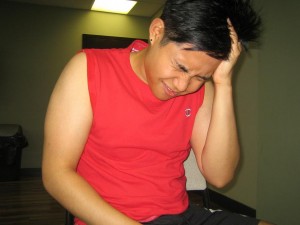Cluster headaches can affect the ability of the child to concentrate on his/her schoolwork or participate in sports and other activities. It is important to note that cluster headaches do not manifest until after a child is 10 years old. Since these headaches typically occur in groups, they can be debilitating. In case the headaches are chronic or severe, the doctor might prescribe medications to help minimize or prevent the development of cluster headaches.
Close look on cluster headaches
A cluster headache is a type of sore headache that tends to occur in groups or clusters throughout the day. Those who have this condition usually end up with 1-4 headaches in a day.

Headaches can occur on a daily basis for several weeks or months and then cease abruptly, only to start again weeks or months after. In some cases, the headache-free phase can last for years. Some can end up with chronic cluster headaches and do not have a remission period. In addition, chronic cases can manifest more often throughout the spring and fall months.
Among children, cluster headaches are quite common among teenage boys. These headaches typically occur seasonally and often manifest in the spring or fall season. Since cluster headaches do not usually affect children and teenagers, they might be diagnosed initially as a symptom of allergies if they follow a seasonal pattern.
What are the signs?
The child might complain of intense burning pain around one eye during an attack. The pain can also occur in the forehead, temple, cheek or nose on that side of the face. The pain might always occur on the same side of the head or transfer sides when a new headache cluster starts.
During a headache, you will notice that the eyelid of the child on the affected side droops or the pupil in the eye on the affected side appears smaller than the pupil in the other eye. Tearing of the eye and a runny nose can also occur during an attack. The child might appear agitated during an episode and could not sit still.
Treatment
The treatment options for cluster headaches that occur in children are similar with the adults. The treatment for cluster headaches involves prevention or reduction of headaches in the cluster and reducing the pain.
Preventive treatment must be started soon after a cluster starts to shorten the duration and minimize the severity of the headache. The doctor might prescribe calcium channel blockers, corticosteroids, lithium carbonate, anti-seizure medications or ergotamine to help prevent headaches.
Once a headache occurs, inhalation of oxygen can help minimize the pain. Injectable sumatriptan or in the form of a nasal spray can also provide quick relief. Lidocaine which is available in nasal form can also reduce the symptoms by numbing the sore area.
